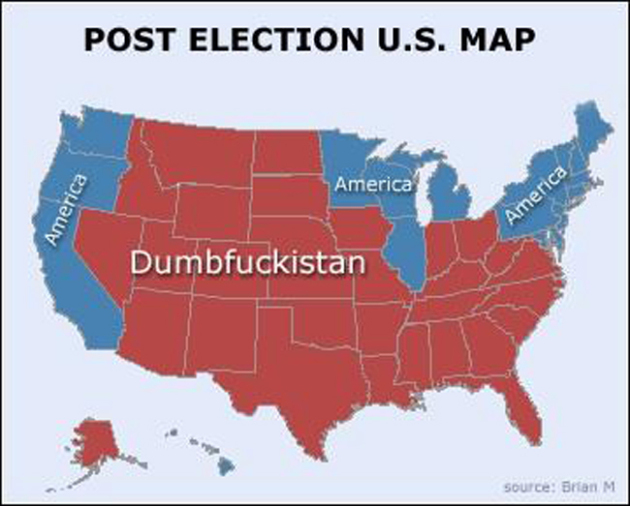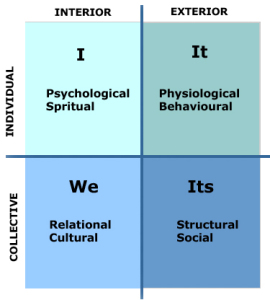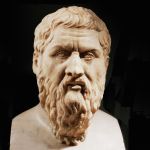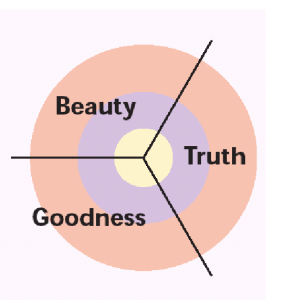I start this podcast with some observations about the big Republican win in the U.S. midterm elections. For an Obamapologist like me it is a sad day, marking the end of the Obama agenda. It is not necessarily the end of the Obama era, however. By soundly winning the Senate and bestriding Congress the Republicans have stopped Obama cold, so the question now becomes…will they offer an agenda of their own? If they do I’ll bet they find that Obama still has the bipartisan spirit that launched him into the Presidency in 2008. It’ll be in both their interests to accomplish something, because over the long haul in politics something will always beat nothing. But obstruction can be a good short-term strategy, and has been for the Republicans so far. Stay tuned…

The liberal’s map of the US.
MONEY, POWER AND JUSTICE
In my main story I address the mother of all first world problems: global capitalism, by responding to a piece written by Joe Corbett entitled Jeff Salzman, Ken Wilber and the Missing Link between Integral Theory and Practice, in which he offers a critique of a conversation I had with Ken Wilber and posted a few weeks ago: The World According to Wilber.
Corbett’s essay reveals a fruitful friction often found among integralists. First let me address his opening theoretical argument that when justice is not included on par with the primary human values of goodness, truth and beauty it is a “glaring omission of the L-R [lower right] quadrant”, and therefore the conversation Ken and I had is “entirely devoid of any structural analysis or acknowledgement of social institutions and the prevailing forms of justice within society.”
 This is nonsense of course; suffice it to say that Ken WIlber, author of AQAL Theory, didn’t just – ooops! – forget about the exterior collective dimension of reality. Indeed Ken and I both talk about the structures of society all the time, including in our conversation. I wouldn’t know how to discuss current events without doing so.
This is nonsense of course; suffice it to say that Ken WIlber, author of AQAL Theory, didn’t just – ooops! – forget about the exterior collective dimension of reality. Indeed Ken and I both talk about the structures of society all the time, including in our conversation. I wouldn’t know how to discuss current events without doing so.
Part of the confusion may come from a misreading of AQAL Theory where Ken relates the four quadrants that make up a human being to the three native perspectives a human being can take: first person (I and me), second person (you and we) and third person (it and they).
So how do four quadrants flow into three perspectives? Ken situates both the upper right-hand quadrant (U-R) and lower right-hand quadrant (L-R) in the third person world of “its”. Quadrantly speaking, the individual human body (in the UR) and the power/economic systems of societies (in the LR) are respectively the individual and collective exterior dimensions of reality, and can be seen and measured by the senses. Thus third person.
Ken goes on to associate the first, second and third person perspectives with what he calls the “big three” philosophical values of goodness, truth and beauty. First person is the domain of beauty (which is deeply subjective), second person is the domain of goodness (how we treat each other) and third person is the domain of truth (what is objectively verifiable).
 The philosophical relationship between the fundamental values of goodness, truth, beauty and those of justice is a discussion that’s been ongoing at least since Plato. If you’re interested in this sort of thing, check out Steve McIntosh’s terrific thesis on the subject, The Natural Theology of Beauty, Truth and Goodness.
The philosophical relationship between the fundamental values of goodness, truth, beauty and those of justice is a discussion that’s been ongoing at least since Plato. If you’re interested in this sort of thing, check out Steve McIntosh’s terrific thesis on the subject, The Natural Theology of Beauty, Truth and Goodness.
PRIMARY VALUES: MOVING TARGETS
What Corbett is really saying in his critique is that Ken and I didn’t talk about the L-R quadrant in a way he agrees with, so let’s move on to Corbett’s argument that Ken and I give short shrift to the value of justice. Here are a few paragraphs that sum up his thesis:
“In their talk, Wilber and Salzman speak as if the development and expression of consciousness takes place in a vacuum, without social and historical context and free of the distorting influences of power and money. No consideration is given in their analysis to how institutional structures of power and money (media, schools, religion, the corporate-military-police-state) systematically prevent and retard human development.
“Wilber fails to mention that corporations are basically private tyrannies, and in western capitalism they constitute the vast majority of the economy. These private tyrannies also have overwhelming influence in the political process, thus making capitalist societies essentially corporate democracies, or ‘totalitarian societies with privatized characteristics’.
“Cunning and force is the secret behind the “diffusion” of [modern] values, not demographics. As Karl Polanyi shows in “The Great Transformation”, modern orange values and discipline did not spontaneously diffuse but were coerced upon a resistant population of citizens, workers, and consumers who were ultimately bought and sold the paradigm of modern capitalism and representative democracy to replace their community-based systems of equity and reciprocity.”
Note that for Corbett power and money are “distorting influences” that “prevent and retard” human development. This is a view that sees malevolent forces at work in the world, oppressing and corrupting an otherwise healthy society. Every first tier developmental altitude tells a version of this story. For traditionalists the evil force is the devil, for modernists it is the government, and for postmodernists it is the “corporate-military-police-state”.
A more integral view is that institutional structures of power and money are features of human development. As we have established, they make up the L-R quadrant of a world that is arising in all four quadrants; economic/political structures are tetra-arising along with consciousness (in the U-L quadrant), culture (in the L-L quadrant), and probably also with brain development (in the U-R quadrant). At any rate, every stage of human development has characteristic ways of exercising power and economics.
And all of them are oppressive — as well as creative. Our current political/economic system is the least oppressive and most creative so far. And it is becoming less oppressive and more creative as it continues to evolve.
 Conceptions of goodness, truth, and beauty change radically at each stage of cultural development, and each is functional for its stage of development. What’s good at the warrior stage of development is to behead your enemies. Holy warriors may even see that act as beautiful in a way that modern people could never understand. Slavery, as well, organizes more powerful systems of human resources, creating larger, more capable societies. Early industrialization outlaws slavery, but takes the embedded agrarian values of long workdays, child labor and peasantry from the fields and transplants them into mines and factories.
Conceptions of goodness, truth, and beauty change radically at each stage of cultural development, and each is functional for its stage of development. What’s good at the warrior stage of development is to behead your enemies. Holy warriors may even see that act as beautiful in a way that modern people could never understand. Slavery, as well, organizes more powerful systems of human resources, creating larger, more capable societies. Early industrialization outlaws slavery, but takes the embedded agrarian values of long workdays, child labor and peasantry from the fields and transplants them into mines and factories.
The same evolutionary forces are at work in the realm of justice, which has historically been defined as “might is right”, “an eye for an eye”, “the king’s edict” and “rule of law,” the last of which is the judicial innovation that co-arises with economic capitalism. The next stage of justice, social justice, which insists that “everyone’s basic needs be met”, is arising in cutting edge cultures. Each stage, however contaminated it is with the previous structures and however ragged its emergence, represents a major step forward in the human condition.
The enormous — and ongoing — moral development of the contemporary world is demonstrated by the fact that each of the previous social systems is now regarded as obscene. And the beat goes on: the dark fruits of contemporary capitalism such as habitat loss, carbon pollution, mindless consumption and meat factories will undoubtedly be seen as obscene to our progeny. Indeed they are increasingly being seen as such by our contemporaries.
WELCOME TO PROGRESS
Today’s money and power structures are the latest and best of what humanity has created, co-created and been created by. They look bad when compared with a fantasy of a different history and a better world, but what aspect of real life doesn’t suffer in comparison with an ideal? I’m suspicious of arguments that want to remold the world according to a story of how history went wrong. It went the way it went. Reality was, and is, reality. Let’s learn the lessons and move on.
Of course none of this is an argument for complacency. Evolution does not happen on its own. It is propelled by millions of daily acts, and sometimes revolutions, by passionate people who are guided by an emergent moral intuition that says “this isn’t good enough.” Corbett and I are in that process with our co-critiques, as you are by reading them and thinking about them (remember, thoughts are things!).
What is not necessary, and in fact counterproductive, is to continue the first tier split of demonization of “the enemy”. This is more than just a matter of emotional tone. There’s a reason the postmodern critique of modernity is so politically weak in contemporary society. People realize — and Corbett’s essay is a perfect example — that it is an attack on the economic system that has created more wealth, decency and benefit to the human race than any other in history. We are far more powerful when we appreciate the current system at the same time we work to move it forward.
So what are we in for? Well, more goodness, truth, beauty and justice! We will continue to evolve our economic and political structures, as well as all of reality in all four quadrants, to express the humane and egalitarian values of post-modernism and beyond.
Podcast: Download
Subscribe: Google Podcasts | RSS







Totally agree with you Jeff about the disagreement with Joe Corbett. It’s a difficult thing to do, “finding the enemy” as you say, and “making friends with the system”. Keep up the good work and helping others to do it.
I’ve linked to your article here:
http://integralblog.com/jeff-salzman-justice-is-fully-included-as-an-integral-value/
Thanks for the encouragement and link, Joe! I highly recommend your blog integralblog.com!
Hi Jeff:
loved your analysis and argument regarding the Corbett critique!
Thanks Susanne, so good to have you in on these discussions!
“This is a view that sees malevolent forces at work in the world, oppressing and corrupting an otherwise healthy society. Every first tier developmental altitude tells a version of this story. For traditionalists the evil force is the devil, for modernists it is the government, and for postmodernists it is the ‘corporate-military-police-state’.”
The ability of so many “integralists” to pigeonhole disparate individuals and their views into neatly color-coded boxes will never cease to amaze, especially when it enables complex arguments to be summarily dispensed with by virtue of their being merely “traditional,” “modern,” or “postmodern” (as if such broad dismissals actually stand up to rational scrutiny as valid critiques of the points of any actual, specific argument).
For all its self-flattering talk of “honoring the spiral” and sympathetically understanding lowly “first-tier” perspectives, integral tends, more often than not, to simply propagate the same blanket generalizations and simplistic views that “postmodernism” initially arose to combat. In such cases, “integral” becomes, by its own definitions, an anti-first-tier perspective in denial of its own first-tier modernist shadow.
Corbett’s essay calling out integral’s lack of attention to social justice is a quite valid, serious critique of integral’s pie-in-the-sky idealism (a critique that Terry Patten and Marco Morelli were trumpeting a couple of years ago: http://beamsandstruts.com/articles/item/814-occupy-integral). To dismiss it as a misunderstanding of AQAL is a counterargument that I hardly think can be leveled at Corbett by anyone familiar with his work. The same goes for easy dismissals of his concerns about the “corporate-military-police-state” and the monied interests that support it. Eisenhower was concerned about that too, if I recall. Was he merely a raging postmodernist?
Integral has little to no political relevance–not even registering as “weak”–because upon close scrutiny its deep preference for waxing poetic about abstract Platonic Ideals over engaging in the pragmatic, nitty-gritty details of social change falls apart like a house of cards.
Corbett was trying to round out the “Big Three” Platonic Ideals with a fourth that might at least counterbalance this problem.
Jeff – an ‘Obamapologist’? Really? Of course, like the rest of us progressives, you like what he SAYS. But look at what he DOES, at his actual policy decisions. After accepting a Nobel Peace Prize (!), he’s become a serial killer who is ‘comfortable’ with selecting names from a weekly ‘kill list’ for so-called targeted drone attacks that have killed more than 2000 people so far, most of them civilians, including old men, women, children, brides, grooms, et al. in at least 6 countries. He reserves the right to assassinate American citizens and others without due process. He rampred up the illegal war in Afghanistan and now renews his commitment to aggressive war in Iraq, after earlier participating in the disastrous attack on Libya. He looks the other way as Israel systematically bombs and starves the citizens of Gaza, reducing them to the condition of junkyard dogs. He violates the Constitution by refusing to prosecute high crimes committed by top officials of the Bush administration. He’s a corporatist who lets the Justice Department pass on indicting ‘too big to jail’ ceo’s of the predatory Wall Street Banks that nearly destroyed the financial system. He leads no fight to raise taxes on corporations nor to strengthen labor unions, nor to eliminate massive subsidies to agricultural, energy, and other industries. He does nothing about the world’s largest prison population, a huge percentage of which consist of black youth stuck there for petty crimes. He continues to deport record numbers of undocumented workers. He has persecuted and prosecuted record numbers of whistleblowers and journalists. He supports the horrendous TPP agreement. He has authorized billions to upgrade the U.S.’s nuclear arsenal. I could go on.
That’s a lot that needs defending. As an Obamapologist you’ve got a heavy stone to roll. As an integralist, you shouldn’t even be trying. As Ken Wilber has written, every stage of development has its triumphs and disasters. Obama, I’m afraid, has become an agent of disaster, and no integralist should be afraid to say so.
Great post and argument, Charles. Hear my response in the upcoming podcast.
[a muddle. i apologize. wanted: greater insight and a good editor]
In this and many other Community Integral family arguments, I’m reminded of a Kenjushri consideration entitled, “Hurts More, Bothers You Less” [see link, below] — a reflection on the entanglement of Nirvana and Samsara and the “apparently contradictory currents” of Absolute and Relative Truth. In it, he first reflects on how,
“In Absolute Truth, the Unmanifest Domain, there is simply nothing wrong… And there’s a whole tradition of just getting absorbed in the nothing-bothers-me view. That’s the ‘arhat.’ When you actually get in nirvikalpa and nothing’s arising, it’s the same as deep, dreamless sleep at night. Nothing bothers you, because nothing’s arising…”
And yet, he continues:
“The more Awakened you become, the more you actually feel Samsara, and the more painful it becomes. The pain increases… You become so sensitive, you can feel everything that’s arising for everybody… All of that becomes something you taste and feel constantly. And that’s on the Relative side… On the Relative side, the pain increases. It hurts more.”
In sum, Ken avers that, “We have to give ourselves plenty of room to both feel Absolute Perfection in everything that’s arising, and yet see one person starving and you will start crying so hard it will kill you. And if you’re not doing both, you’re doing something wrong.”
He rounds out this consideration reminiscent of “two great archetypes of the Awakened soul on this planet”:
“And I think that they both speak to us very strongly. One is the Awakened Buddha [the arhat], who is at peace and has found a way off the wheel of suffering. The other is the Christ figure [the activist] who recognizes the intersection of the human and the Divine, and suffers enormously for that Realization. And the epitome of the Truth of that intersection is the Passion — the Passion on the Cross. I think it’s very interesting it’s called the Passion, because you will passionately be upset by every piece of suffering that arises. It will tear you apart.”
I wonder if the “friction” here is emblematic of this jumping off place that lays between Peace or Passion, arhatism or activism, Buddha or Christ. On a personal dispositional level or even as a matter of philosophy, is it better only to abide as I AM THAT or, ignited by this Understanding, if need be, to storm into the marketplace, roust the moneychangers, and smash their tables? The answer, as ever, is probably not an either/or, but some manner of both/and for each of us.
Smith is focused on Realizing the Truth about who we really are, in himself, and is also engaged as a teacher of this understanding to others — emphasis: Peace. Jones has had her heart ignited by this Recognition and, similarly, is returning to the city with bliss-bestowing hands, but willing to crack some heads and smash some tables if need be — emphasis: Passion. Both serve a bodhisattvic commitment.
——-
When pulsing the heart/mind “radar” of one’s care and concern, one’s moral consideration for the world, what shows up? Near and far (within one’s self; in our private relationships; in the public sphere; regarding the state of our habitat — in all Four Quandrants), what are the “blips,” both positive and negative, that arise? It would seem that there are some glaring and red-hot action items, matters of considerable social injustice (both incidental and structural), that register in Joe Corbett’s awareness, while somehow, apparently, not showing up with equal urgency and emphasis in the hearts and minds at Integral Central. Joe it seems, among others, is passionately upset on several fronts. Integral Central, it appears, not so much.
In addressing Joe Corbett’s critique of “The Missing Link in Integral Theory and Practice,” Jeff Salzman rhetorically embraces Joe’s point of view at the outset: “I’m going to agree with Joe. Justice is crucially important to understanding the human condition and how to better the human condition.” Further, Jeff embraces the “intelligence” of the “Green” vMEME’s postmodern critique of the modern corporate state as “absolutely legitimate”:
“We’re supposed to be fixing it. We’re supposed to be continuing to move the ball. But we’re not supposed to be condemning it as something that shouldn’t have happened. And this is one of the big moves into Integral consciousness, from Green. Green condemns the corporate state, reflexively and intelligently. And thank God! After modernity or the Orange altitude, which is dedicated to the proliferation of industry and science and development, we have a stage of development, postmodernity, that presents the critique to that, and shows the flaws, from global warming to all sorts of ecological disasters and cultural disasters, the down side of [Orange modernity].”
Still, I suppose I join with Joe and others in wondering why, then, the cruciality of Justice and the legitimacy and validity of the “Green” critique is not more roundly embraced and more in evidence at Integral Central. In order to continue to “move the ball” and (borrowing from Charles Eisenstein) vouchsafe the more beautiful world our hearts know is possible, is it misguided to contend that the very serious crises wrought by modernity warrants some greater emphasis on the intelligent exposure of modernity’s flaws? And is it not healthy to push back against or even, in some instances, to literally arrest the perpetrators of injustice?
Per Integral Central, on bombing Islamist terrorists and their families in their sleep: permission granted. On arresting U.S. war criminals: [crickets].
Also, spectrum-wise, I’m not entirely persuaded that Joe Corbett’s critique can be relegated to (and somewhat dismissed as) only 1st-Tier mean “Green”-ism. Joe’s voice, among other similarly-critical voices, is not without some 2nd-Tier grounding, with Yellow and Turquoise (and higher) hues.
On “pet” mean-Green subjects like Monsanto and the Koch Brothers, from the Jeff/Ken or Integral Central moral vantage, are they indeed good or bad actors, their ethos and “model” to be carried into that more beautiful world or not? Ken? Jeff? (Corey?) Who’ll have a go at this one?
Inquiring minds what to know. Perhaps, Mr. Wilber or Mr. Salzman, you can take turns with these questions, and help to sort us out.
Was the 2003 invasion of Iraq a black-letter example of aggressive war — “the supreme international crime” — or not?
Regarding the 20+ trillion-dollar robbery underlying the Global Financial Crisis of 2007-08 or the use of systematic torture by the Bush/Cheney Administration, given that these very significant crimes have gone by virtually unprosecuted, thus revealing “The Rule of Law” and “Equal Justice Under the Law” (the friese inscription at the United States Supreme Court) as a gross fiction, should our hearts be heavy about this or not?
And among the biggest of big “blips” on the vMEME radar screen: our compounding and mounting ecological crises; our increasing chemical “body burden”; the Sixth Mass Extinction, presently well underway; Global Warming… Some projections foresee not-too-distance challenges that threaten human extinction. How “perfect” would that be? Better today to burnish my understanding of AQAL theory or chain myself onto the tracks in front of a coal train?
And while Jeb Bush, Newt Gingrich, Karl Rove, and (Republican-lite) Bill Clinton are getting some hearty back slaps for their Integral-sympathetic “intelligence,” how about some inclusive, embracing, belongingness strokes for Glenn Greenwald, Naomi Klein, Chris Hedges, Noam Chomsky, Chalmers Johnson, and similar “legitimate” critics of the modern corporate state? Is it surprising that patting Karl Rove on the back reads, not as “higher” or “Integral” or as “loving-kindness” in action, but as patently “conventional” or, worse, as an endorsement of his part in a war of aggression, his torture apologetics, his and his party’s hell-bent “drill baby, drill” destructiveness?
Is there some “missing” emphasis or blind spot at Integral Central on these matters? What’s missing here, we are counseled, is a “higher” perspective on these matters, on some of our parts — on the part of folks like Joe Corbett. Were some of us to transition into higher stages, then, perhaps, these matters would indeed Hurt More, but Bother Us Less. Either way, we’ve got the “hurts more” part down pat. And part of our bother remains the apparent lack of bother, at Integral Center, on some of these issues.
* https://www.youtube.com/watch?v=5TUr949kmZk
Robert Lyons has nailed it for me. Beforewe can seek Greater Truth, we must confront the truths of the icredible consequences of modernity, while acknowledging its acomplishments. But as Corbett pkints out, the ‘mean orang meme’ uses extreme power and resurces to continue elite dominance within the current ecenomic system, and confronting it with ‘greater truth’ is required before we can transcend and include.
I appreciate the shout out, Mr. Loving. And you’ve made the case in a far more elegant fashion — in two sentences instead of my gab fest. Thank you!
the verdict is in:
charles marxer 10, jeff salzman 0
Jeff,
You have written that “Today’s money and power structures are the latest and best of what humanity has created, co-created and been created by.” Let us hope not. Please read Naomi Klein’s book, “This Changes Everything: Capitalism vs. the Climate.” The economic system (capitalism) created by “today’s money and power structure” is killing the planet. All the major life support systems of the planet–the forests, fresh water, the oceans, the fisheries,the soil, the atmosphere, biodiversity, to name some of the major ones–are in decline, some of them in major decline. If this is the best of what humanity has created, we are indeed in deep trouble. The “disaster of modernity” is of such magnitude that everything else pales in regard to it, including the slow postmodern and integral evolution. It seems to me that you gloss over/downplay/(deny?) the seriousness of our present situation. What good are the positives of modernity/capitalism if the price we pay for those positives is the destruction of the planet and the eventual loss of those positives? We are living in an apocalyptic time. What else can the time of the destruction of the planet be called?
In regard to the political system, I cannot improve on Chris Hedges in his op-ed, The Imperative of Revolt (Published October 21, 2014 | Truthdig), so I quote two paragraphs from the op-ed.
” I met with Sheldon S. Wolin in Salem, Ore., and John Ralston Saul in Toronto and asked the two political philosophers the same question. If as Saul has written [‘Voltaire’s Bastards’ and ‘The Unconscious Civilization’] we have undergone a corporate coup d’etat and now live under a species of corporate dictatorship that Wolin [‘Politics and Vision’ and ‘Democracy Incorporated’] calls ‘inverted totalitarianism,’ if the internal mechanisms that once made piecemeal and incremental reform possible remain ineffective, if corporate power retains its choke hold on our economy and governance, including our legislative bodies, judiciary and systems of information, and if corporate forces are able to use the security and surveillance apparatus and militarized police forces to criminalize dissent, how will change occur and what will it look like?”
“This devolution [yes, devolution] of the economic system has been accompanied by corporations’ seizure of nearly all forms of political and social power. The corporate elite, through a puppet political class and compliant intellectuals, pundits and press, still employs the language of a capitalist democracy. But what has arisen is a new kind of control, inverted totalitarianism, which Wolin brilliantly dissects in his book ‘Democracy Incorporated.'”
Justice? Not in such a system. Economic and political evolution? No, devolution. Solution? Coming from a “higher level” place? Obama tried that when he got elected in 2008. It didn’t work. Perhaps some take solace in some metaphysical Absolute realm, where everything is perfect and unfolding just as it “should.” From my point of view, this realm is no more likely to exist and some eternal Heaven and Hell realm. Its just us, here, now, destroying the planet. Only a major change in how we live (in modernity) can stop the already in progress, compliments of modernity, destruction of the planet.
Ron Ruhnke
Ron Ruhnke,
I can accept (nearly) every critique as stated and yet still conclude that
“Today’s money and power structures are the latest and best of what humanity has created, co-created and been created by.”
is a highly plausible reading of history. I know of no time in history where some group or groups held considerable control over nearly all forms of political and social power.